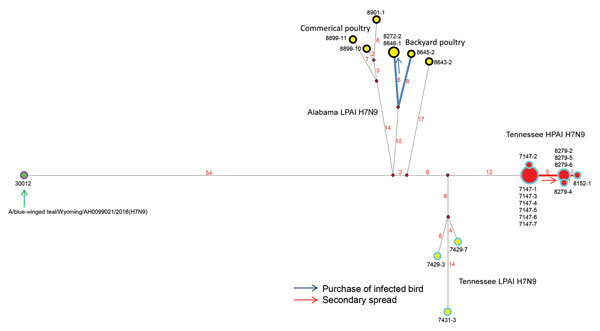Volume 23, Number 11—November 2017
Dispatch
Highly Pathogenic Avian Influenza A(H7N9) Virus, Tennessee, USA, March 2017
Figure 2

Figure 2. Median-joining phylogenetic network of influenza A(H7N9) viruses, United States, 2017. The median-joining network was constructed from concatenated H7N9 virus genomes containing all 8 segments. This network includes all the most parsimonious trees linking the sequences. Each unique sequence is represented by a circle sized relative to its frequency in the dataset. Isolates are colored according to the sample: red inner circle represents HPAI in poultry, yellow inner circle represents LPAI in poultry, green inner circle represents LPAI in a wild bird, purple outer circle represents isolates from Wyoming, black outer circle represents isolates from Alabama, and sky-blue outer circle represents isolates from Tennessee. Bold lines indicate farm-to-farm transmission verified by epidemiologic investigations. Red numbers indicate number of nucleotide changes between isolates. Black numbers are abbreviated isolate names. HPAI, highly pathogenic avian influenza; LPAI, low pathogenicity avian influenza.